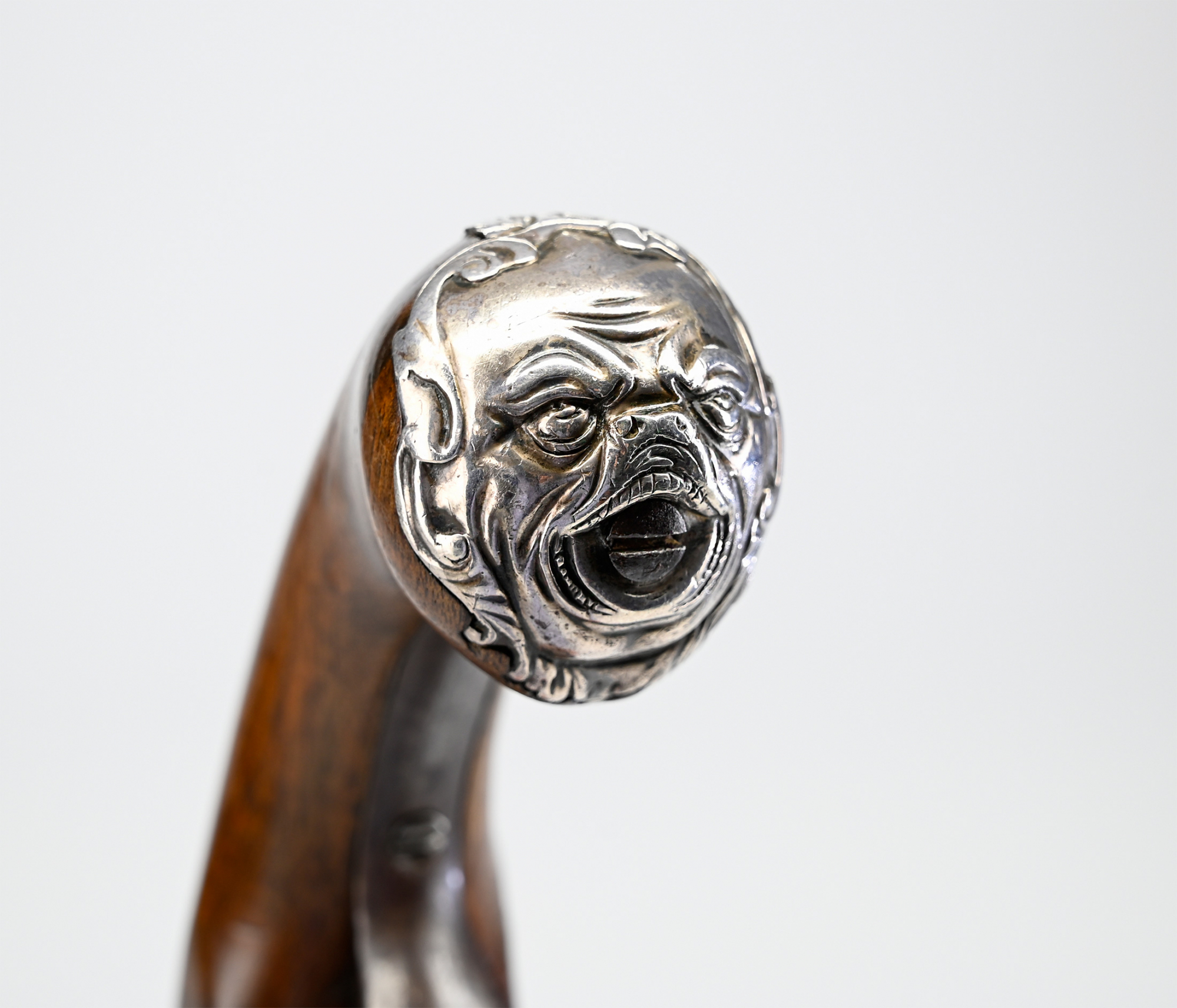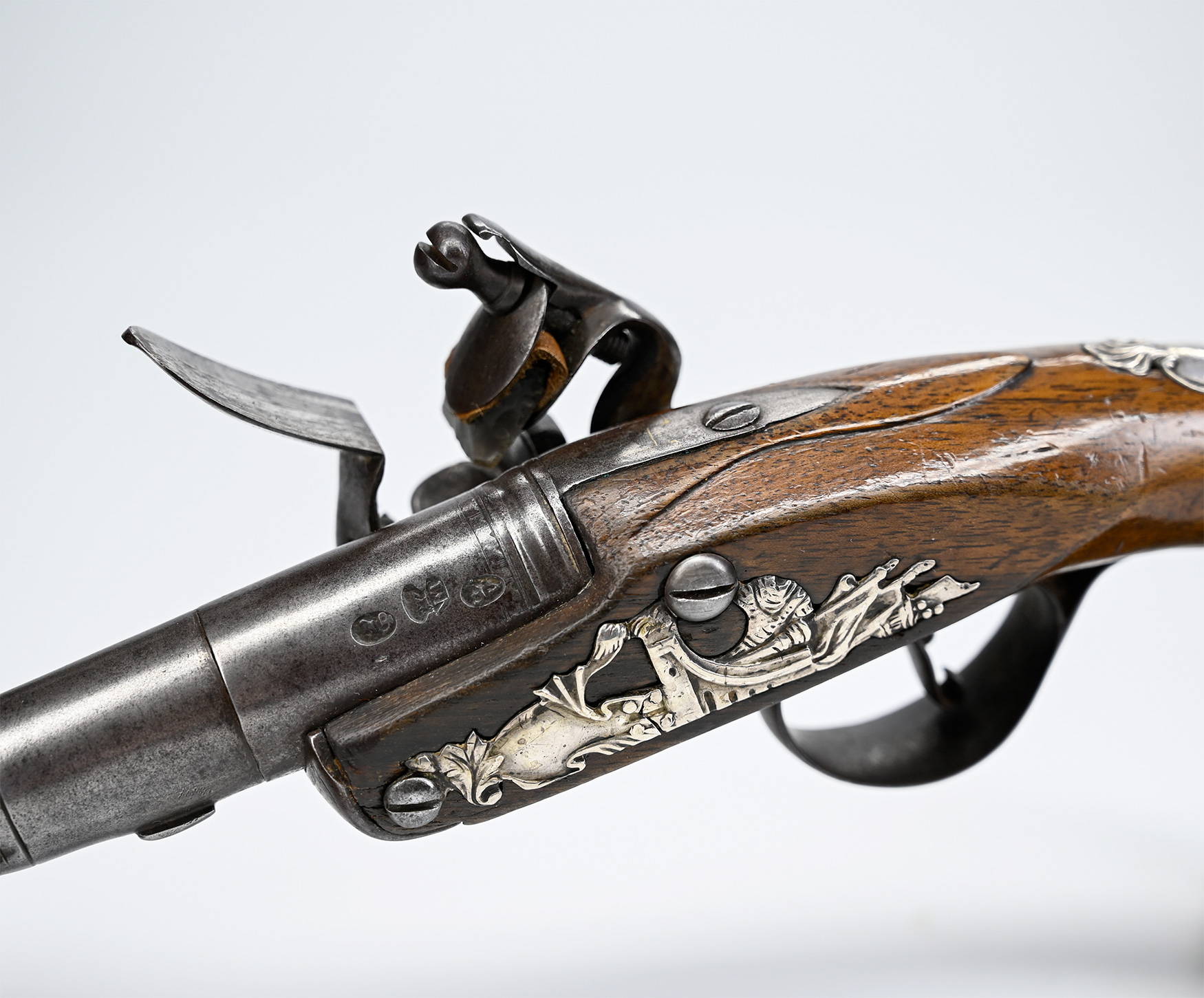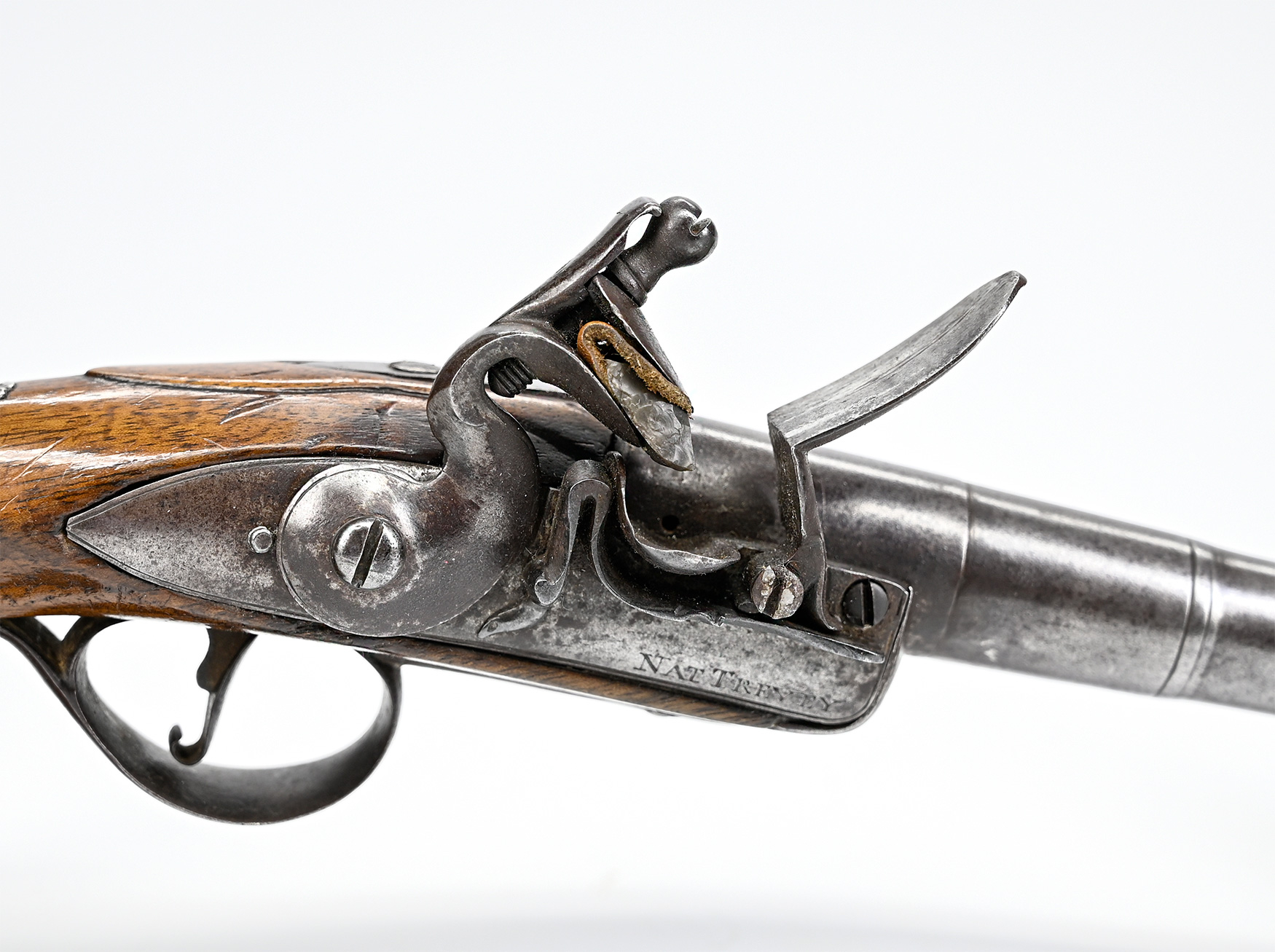site search
online catalog
SILVER-MOUNTED QUEEN ANNE TURN-OFF BARREL PISTOL BY NATHANIEL TREVEY CA. 1740-50

Hover to zoom









$3,250.00
Quantity Available: 1
Item Code: 490-3434
Shipping: Determined by Method & Location of buyer
To Order:
Call 717-334-0347,
Fax 717-334-5016, or E-mail
Using a truncated stock not extending past the lock and a barrel fitted with a lug at the bottom breech to allow it to be unscrewed for loading, these pistols became popular in the reign of Queen Anne and remained so into the reigns of the Georges. The barrel on this is a cannonbarrel form with muzzle swell and moulded baluster rings at the breech. The left breech shows two clear proofs and maker’s cartouche with a clear “NT” for Nathaniel Trevey, whose name appears also along the lower edge of lock: “NAT TREVEY.” The lock has a simple line border and the iron tiggerguard has simple thin border lines and a starburst of simple lines on the bow, with a simple acorn finial on the tang. The silver mounts, however, are more elaborate, cast in low relief, and comprise a grotesque mask buttcap, a rococo trophy of arms as the sideplate and thumbpiece escutcheon, also vey rococo with shell and flowing leaf motifs with reversing s-curves.
The walnut stock has good surface and warm brown color, and a good fit to the metal. There is minor chipping to the lower edge of the lock apron below the hammer. The apron of the breechplug tangs is a simple beaver tail. The silver sideplate shows an old repair to a crack just forward of the rear lock screw. Four small silver pins were used to secure the ends on either side of the break. The breechplug tang shows a very thin brazed repair just forward of the screw. The metal overall is smooth with a mix of silver gray with a dusting of darker gray.
Trevey apprenticed in 1703 and worked until 1754 or so. He did some ordnance work as a “setter up” from 1742 to 1749, when the government sought to speed up production. Queen Anne style pistols are a wonderful combination of art, if you have an appreciation of the Rococo, history, and technology. These are breech loading, requiring a wrench to be slipped over the barrel to engage a lug near the base of the barrel and unscrew it. This disclosed a raised breech with external threads and a concave top into which the powder would be poured and on which the ball rested. This permitted uniform charges and, because the barrel would be screwed back in place down over the ball, a much tighter fit. The result was that the pistol was both very accurate and packed a surprisingly big punch for its size. [sr] [ph:m]
DISCLAIMER: All firearms are sold as collector's items only - we do not accept responsibility as to the shooting safety or reliability of any antique firearm. All firearms are described as accurately as possible, given the restraints of a catalog listing length. We want satisfied customers & often "under" describe the weapons. Any city or state regulations regarding owning antique firearms are the responsibility of the purchaser. All firearms are "mechanically perfect" unless noted, but again, are NOT warranted as safe to fire!
~~~~~~~~~~~~~~~~~~~~~~~~~~~~~~~~~~~
THIS ITEM, AS WITH ALL OTHER ITEMS AVAILABLE ON OUR WEB SITE,
MAY BE PURCHASED THROUGH OUR LAYAWAY PROGRAM.
CLICK HERE FOR OUR POLICIES AND TERMS.
THANK YOU!
Inquire About SILVER-MOUNTED QUEEN ANNE TURN-OFF BARREL PISTOL BY NATHANIEL TREVEY CA. 1740-50
Most Popular
Historical Firearms Stolen From The National Civil War Museum In Harrisburg, Pa »
Theft From Gravesite Of Gen. John Reynolds »
Selection Of Unframed Prints By Don Troiani »
Fine Condition Brass Infantry Bugle Insignia »
Large English Bowie Knife With Sheath 1870’S – 1880’S »
Imported (Clauberg) Us Model 1860 Light Cavalry Officer's Saber »
featured item
CIVIL WAR MUSICIAN’S GROUPING INCLUDING WARTIME IDENTIFICATION DISK, IDENTIFICATION SHIELD, AND FREEMANTLE ROTARY VALVE CORNET/VALVED BUGLE: JOHN J. WEAVER- 10th and 56th PA- AND CUTLER’S BRIGADE BAND 1861-1865
This wonderful grouping includes two wartime identification badges, a rotary valve cornet dating about 1864, along with his GAR membership badge and veteran’s id badge. To top it off, in addition to prior service in the 10th PA from April 26 to… (1179-420). Learn More »


